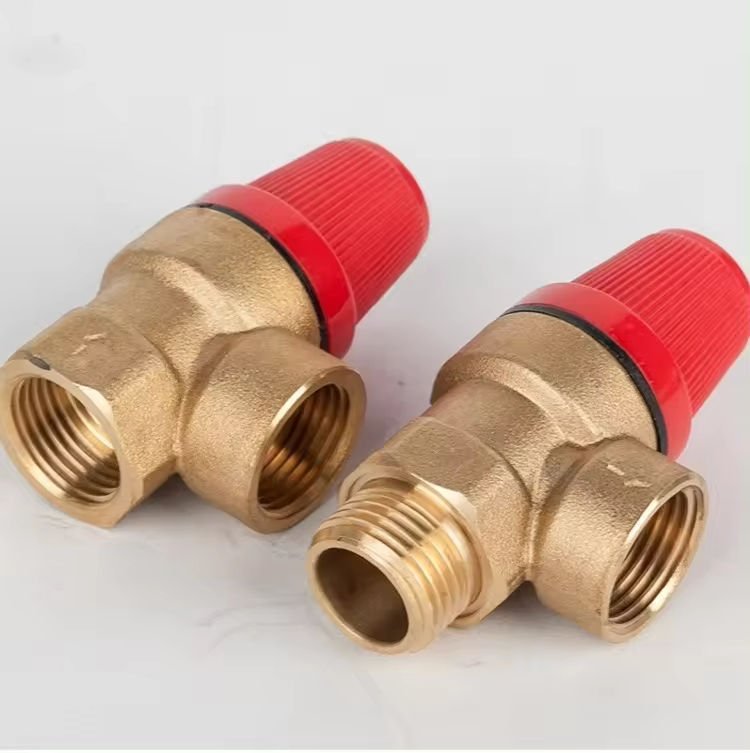Imagine your hydraulic system overloading, causing pipes to burst or machinery to fail. These breakdowns can halt production, cost thousands in repairs, and even risk worker safety. The solution? A hydraulic pressure relief valve (PRV) keeps your system safe by controlling pressure. Read on to discover how these valves work and why they’re essential for your operations.
A hydraulic relief valve, or pressure relief valve (PRV), protects hydraulic systems by releasing excess pressure. It prevents equipment damage, system failures, and safety hazards. By opening at a set pressure, it diverts fluid, maintaining stable operation in systems like plumbing, heating, or industrial machinery.
This article dives deeper into the types, locations, and functions of hydraulic relief valves. Stick around to learn how they ensure safety and efficiency.

What Are the Different Types of Hydraulic Pressure Relief Valve PRV?
Hydraulic pressure relief valves come in various types, each designed for specific applications. Understanding the hydraulic pressure relief valve types helps you choose the right one for your system. The most common types include direct-acting, pilot-operated, and differential-area relief valves.
Direct-acting relief valves are simple and reliable. They use a spring-loaded mechanism to open when pressure exceeds a set limit. These are ideal for smaller systems, like plumbing or heating manifolds, due to their compact size and quick response. However, they may struggle with high-flow systems.
Pilot-operated relief valves handle larger systems with higher pressures. They use a smaller pilot valve to control the main valve, offering precise hydraulic pressure relief valve adjustment. These are common in industrial setups, like construction equipment, where stable pressure is critical.
Differential-area relief valves balance pressure using a piston with unequal surface areas. They’re highly efficient for systems requiring consistent flow, such as main relief valve in hydraulic system applications. Each type follows a unique hydraulic pressure relief valve working principle, ensuring safety and performance.
Choosing the right valve depends on your system’s pressure, flow rate, and application. For example, IVALVECRAFT’s brass safety valves and pressure reducing valves cater to diverse needs, from radiator systems to industrial manifolds. Refer to a hydraulic pressure relief valve diagram to visualize their setup in your system.
Where Is the Pressure Relief Valve Located?
The location of a hydraulic pressure relief valve is critical to its function. Typically, it’s installed where pressure buildup is most likely to occur, ensuring the system stays within safe limits. In most hydraulic systems, you’ll find the PRV near the pump or within the main circuit, as shown in a pressure relief valve circuit diagram.
In plumbing systems, like those using IVALVECRAFT’s thermostatic mixing valves or manifolds, the PRV is often placed near the water heater or main supply line. This placement protects pipes and fittings from excessive pressure, preventing leaks or bursts. In heating systems, such as radiator setups, the valve is usually near the boiler to safeguard the entire network.
Industrial systems, like those in construction or manufacturing, position PRVs close to high-pressure components, such as hydraulic pumps or actuators. This ensures the function of pressure reducing valve in hydraulic system is maximized, maintaining stable operation. The hydraulic pressure relief valve symbol in system schematics often marks its exact location, making it easy to identify during maintenance.
Proper placement depends on the system’s design and pressure points. Incorrect positioning can reduce efficiency or fail to prevent overpressure. Consulting a hydraulic pressure relief valve diagram or working with a trusted manufacturer like IVALVECRAFT ensures optimal setup for your needs.
Where Is the Hydrostatic Relief Valve?
A hydrostatic relief valve is a specialized type of pressure relief valve used in systems where water or fluid pressure builds up due to thermal expansion or external forces. Unlike standard PRVs, these valves are common in closed-loop systems, such as swimming pools, irrigation systems, or underground plumbing networks.
In swimming pools, hydrostatic relief valves are typically installed at the bottom of the pool. They prevent damage from groundwater pressure pushing against the pool structure. When external pressure exceeds the pool’s internal pressure, the valve opens, releasing fluid to balance the system. This follows a specific hydraulic pressure relief valve working principle tailored to hydrostatic conditions.
In plumbing systems, you might find these valves in underground water tanks or pipelines. They protect against pressure spikes caused by temperature changes or fluid expansion. For example, IVALVECRAFT’s brass safety valves are designed for such applications, offering durability and precise pressure control.
The hydraulic pressure relief valve symbol for hydrostatic valves often appears in system blueprints, indicating their placement in low-lying or pressure-sensitive areas. Proper installation is key to avoiding structural damage or system failure. Always refer to a pressure relief valve circuit diagram to ensure correct positioning in your setup.
Summary
Hydraulic pressure relief valves are vital for protecting systems from overpressure, ensuring safety and efficiency. From direct-acting to pilot-operated types, each serves unique purposes in plumbing, heating, or industrial applications. Their strategic placement near pumps, boilers, or low-lying areas like pool bottoms prevents costly damage. By understanding their types, locations, and functions, you can optimize your system’s performance. IVALVECRAFT offers high-quality valves, including brass safety valves and pressure reducing valves, to meet your needs. Choose IVALVECRAFT, choose reliable partner, enjoy the high quality and best service.


